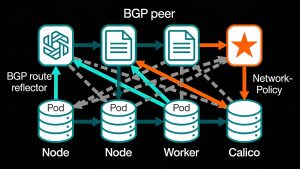Modern development teams are under constant pressure to accelerate software delivery while maintaining impeccable quality. Automated DevOps Testing addresses this challenge by integrating robust testing processes directly into the DevOps pipeline, ensuring that every change is thoroughly vetted before reaching production.
What Is Automated DevOps Testing?
Automated DevOps Testing is a comprehensive solution designed to unify and streamline testing across the entire software delivery lifecycle. By consolidating various testing tools-ranging from static code analysis to full regression and end-to-end tests-into a single workflow, teams gain a centralized platform for defining, executing, and monitoring their testing strategy.
This approach leverages both native and partner testing tools, such as Code Analyzer, Scale Test, Apex Unit Tests, and integrations with solutions like Copado, Provar, and Tricentis. The result is a seamless environment where teams can run diverse test types, enforce quality gates, and ensure only high-quality changes progress through the pipeline.
Key Benefits of Automated DevOps Testing
- Accelerated Release Cycles: Automated testing reduces manual effort, allowing teams to deliver features and updates at a faster pace.
- Consistent Quality Standards: Quality gates and severity levels ensure that only thoroughly tested code is promoted to production.
- Early Issue Detection: By catching bugs and vulnerabilities early in the process, teams avoid costly fixes later in the development cycle.
- Unified Test Management: A single source of truth for test definitions and results simplifies oversight and reporting.
Setting Up Automated DevOps Testing
To implement automated testing within a DevOps workflow, teams begin by installing the testing solution alongside their DevOps management tool. Once installed, permission sets are assigned to test managers and users, granting them access to configure and execute tests.
Users can add and configure various test providers according to their project needs. The system synchronizes test suites and individual tests from each provider, allowing teams to organize tests by type, environment, or purpose-such as regression, security, or code quality. Each test can be assigned a severity level, highlighting its importance within the suite. Essential tests can be marked as mandatory, ensuring critical checks are never bypassed.
Integrating Testing with the DevOps Pipeline
Automated DevOps Testing allows teams to assign specific test suites to different stages of the deployment pipeline. For example, regression tests might be set to run during staging, while security checks are enforced during integration. Quality gates are applied to each suite, defining the criteria that must be met before code can advance. These gates can require all tests to pass, enforce minimum pass rates, or focus on essential tests, providing flexibility to tailor quality standards for each stage.
Real-Time Test Execution and Monitoring
As developers work on new features or bug fixes, their changes are captured as work items within the DevOps management tool. When a work item is ready for review, automated testing is triggered, running the assigned test suites for that pipeline stage. Teams can monitor test execution in real time, reviewing the status of each suite and individual test. Detailed dashboards provide insights into pass/fail rates, severity breakdowns, and specific issues, enabling rapid identification and resolution of problems. If a critical test fails, the system pinpoints the exact location in the codebase, allowing developers to address issues efficiently-sometimes with the assistance of AI-powered quick fixes.
Empowering Teams to Deliver Quality at Speed
Automated DevOps Testing transforms the way teams approach software quality. By embedding rigorous, automated checks throughout the development process, organizations minimize release risk and empower their teams to focus on delivering value to users.
This unified approach not only accelerates delivery but also instills confidence that every release meets the highest standards of reliability and security.
Conclusion
Automated DevOps Testing is more than a technical upgrade-it’s a strategic investment in software quality and team productivity. By automating quality checks and enforcing customizable quality gates, organizations can streamline their release process, reduce risk, and consistently deliver exceptional user experiences.
Teams ready to modernize their development lifecycle and achieve new levels of efficiency should explore the full potential of automated DevOps Testing.
Read more such articles from our Newsletter here.



